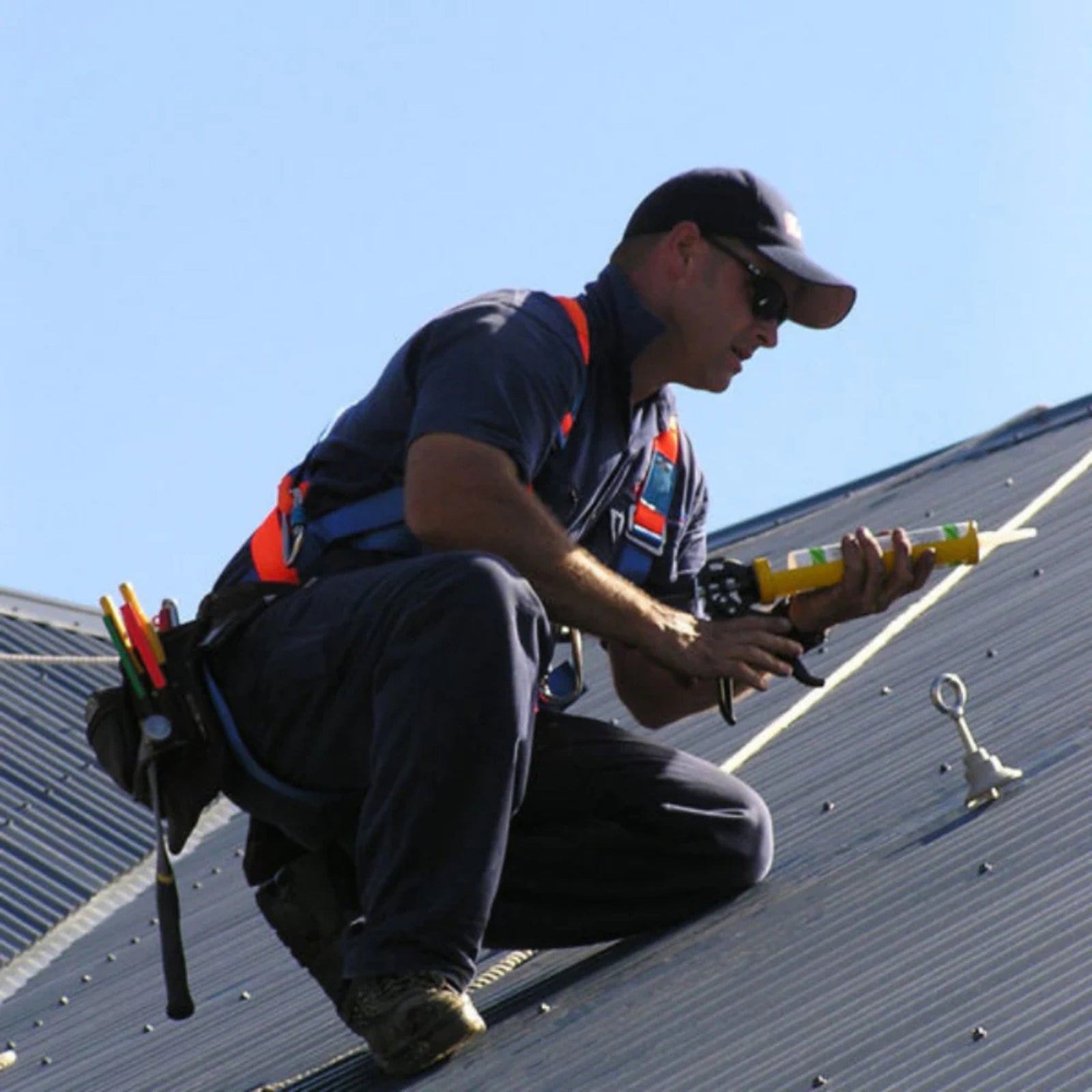When working at heights, safety is the top priority, and single fall arrest lanyards play a crucial role in ensuring this. These lanyards are designed to arrest a fall once it has occurred, acting as the final line of defence in fall protection. In this article, we will explore what single fall arrest lanyards are, how they work, the different types available, and the key considerations when selecting the right one for your job.
What Is Fall Arrest?
Fall arrest is a form of safety mechanism that ensures a person is stopped in their tracks during a fall. This method is used when other forms of fall protection, such as fall restraint and work positioning, are not viable. Fall arrest is the last line of defence and is essential when working at heights.
The Importance of Energy Absorbers
A significant component of single fall arrest lanyards is the energy absorber, which ensures that the forces experienced during a fall are kept within safe limits. Without an energy absorber, standard lanyards made from rope, webbing, or cable may not be able to dissipate the energy from a fall, potentially causing injury. Energy-absorbing lanyards are specifically designed to stretch or tear, dissipating the kinetic energy and reducing the impact force on the user. This energy absorption ensures that the maximum force in the system does not exceed 6kN, keeping the worker safe.
How Do Single Fall Arrest Lanyards Work?
Single fall arrest lanyards typically consist of an energy absorber and a long lanyard. When a fall occurs, the energy absorber stretches or tears internally to absorb the kinetic energy of the fall. As a result, the user is stopped safely.
The lanyard must be of an appropriate length to ensure enough clearance is available for the fall, and it is essential to calculate this clearance accurately. The energy absorber helps mitigate the risks of falls by dissipating energy, but the lanyard must be chosen based on the specific requirements of the job.
Types of Single Fall Arrest Lanyards
There are two primary types of single fall arrest lanyards:
Energy-Absorbing Lanyards
Energy-absorbing lanyards are often made of rope, webbing, or cable and are designed to elongate upon impact, absorbing the energy from the fall. These lanyards come in various lengths, ranging up to 2 metres, and are suitable for scenarios where there is sufficient clearance for a fall to occur. However, if there isn't enough clearance, other options should be considered.
Self-Retracting Lanyards
Unlike energy-absorbing lanyards, self-retracting lanyards (EN 360) have a retractable cable that locks into place when a fall occurs. The built-in brake mechanism engages once the user reaches a certain speed, stopping them quickly. These lanyards are beneficial in situations where energy-absorbing lanyards may not arrest a fall in time, such as when climbing fixed ladders or working on structures without fall arrest systems.
Key Considerations for Selecting the Right Lanyard
When selecting a single fall arrest lanyard, there are several factors to consider to ensure safety and efficiency:
-
Lanyard Length
- Lanyards typically come in lengths of 3ft to 6ft, but the length must be chosen based on the fall clearance. Longer lanyards increase the distance of a fall, which in turn increases the force generated. For safety, it is advisable to select the shortest lanyard length that fits the job requirements.
-
Material of the Lanyard
- The material of the lanyard is another critical factor. For example, when working in environments where welding is involved, it is essential to choose a lanyard made from materials resistant to heat or slag. Similarly, for work at height, such as wind turbines, extended free fall lanyards might be necessary.
-
Weight of the User
- The user’s weight, including the tools they carry, must be factored into the selection of an energy-absorbing lanyard. The EN 355 standard ensures that energy absorbers are tested for a weight of 140kg. However, some absorbers have different weight ranges, so it’s important to check the specifications carefully.
-
Rescue Scenarios
- In rescue situations, such as rope access work, it’s vital to choose energy absorbers capable of supporting heavier loads without damaging the rope. For example, Petzl’s ASAP backup device requires specific energy absorbers to prevent excessive force on both the user and the rope.
-
Double-Legged Lanyards
- For jobs where workers need to transition between anchor points, double-legged lanyards offer more flexibility. However, these come with their own risks, such as improper deployment of the energy absorber if one leg is clipped incorrectly.
How to Safely Use a Single Fall Arrest Lanyard
For optimal safety, workers must understand how to properly use single fall arrest lanyards according to the manufacturer's specifications. This includes ensuring that there is no slack in the lanyard when the worker is moving and confirming that the energy absorber is free to deploy in case of a fall.
Conclusion
Single fall arrest lanyards are indispensable safety tools for those working at heights. By absorbing the forces of a fall, they prevent injury and ensure that workers remain safe in hazardous environments. It is important to choose the right lanyard based on factors such as lanyard length, material, user weight, and the type of work being performed. Careful consideration of these aspects will help ensure maximum safety and compliance with industry standards.
As part of any height safety system, single fall arrest lanyards should be used in conjunction with other protective equipment, such as harnesses and anchors, to provide a comprehensive solution for fall protection. Always remember to assess the specific needs of your job and follow safety guidelines to protect yourself and your team.

